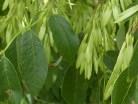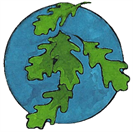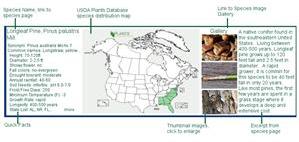
and Sheridan counties were the largest continuous stretch of Ponderosa Pine in the state. Now, it is found in the Niobrara River Basin. Other threats to Nebraska's forests include insects. One such insect is the Western Pine Beetle, which kills large numbers of Ponderosa Pine in western Nebraska yearly. Also of concern, but not yet found inside Nebraska's borders, are the Emerald Ambrosia Beetle (EAB), and the Gypsy Moth. The EAB in particular poses a serious threat to the state's 54 million Ash trees. It was confimed in July, 2012 just 70 miles from the border in Kansas. Diseases such as Thousand Canker Disease, which kill black walnut trees, and Dutch Elm Disease, affecting Elms, are also nearby concerns.

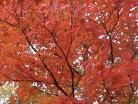

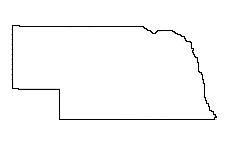
We need a picture of the Eastern Cottonwood! If you would like to share one of your pictures with us for use, please click the link on the left side of the screen! Thank you!
The Cornhusker State, 'Equality before the law'
Nebraska
- Trees
- A-Z scientific
- A-Z by Common Name
- Families
- Aceraceae Maple Family
- Anacardiaceae Sumac Family
- Annonaceae Custard Apple Family
- Aquifoliaceae Holly Family
- Arecaceae, Palm Family
- Betulaceae Birch family
- Bignoniaceae Trumpet Creeper Family
- Burseraceae Frankincense Family
- Caprifoliaceae Honeysuckle Family
- Chrysobalanaceae Coco-plum Family
- Cornaceae Dogwood Family
- Cupressaceae Cypress Family
- Cyrillaceae Cyrilla Family
- Ebenaceae Ebony Family
- Ericaceae Heath Family
- Fabaceae Pea Family
- Fagaceae Beech Family
- Hamamelidaceae Witch Hazel Ffamily
- Hippocastanaceae Horse Chestnut Family
- Juglandaceae Walnut Family
- Lauraceae Laurel Family
- Leitneriaceae Corkwood Family
- Magnoliaceae Magnolia Family
- Meliaceae Mahogany Family
- Moraceae Mulberry Family
- Myricaceae Bayberry Family
- Myrsinaceae Myrsine Family
- Myrtaceae Myrtle Family
- Nyctaginaceae Four Oclock Family
- Olacaceae Olax Family
- Oleaceae Olive Family
- Pinaceae Pine Family
- Platanaceae Plane Tree Family
- Polygonaceae Buckwheat Family
- Rhamnaceae Buckthorn Family
- Rosaceae Rose Family
- Rubiaceae Madder Family
- Rutaceae Rue Family
- Salicaceae Willow Family
- Sapindaceae Soapberry Family
- Sapotaceae Sapodilla Family
- Simaroubaceae Quassia Family
- Styracaceae Storax Family
- Symplocaceae Sweetleaf Family
- Theaceae Tea Family
- Tiliaceae Lindon Family
- Ulmaceae Elm Family
- Taxaceae Yew Family
- Yucca Family
- Browse by State
- Rare or Endangered Species
- Trees_with_Special_Uses
- Tallest and Biggest
- Noxious Weeds
- Causes
- About Us
- Our Stores


™

™

Custom Search
™
™
We are part of the Hubpages community.
Click here for more info.
Click here for more info.
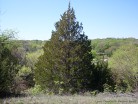

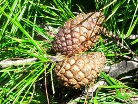
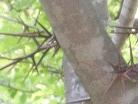
Home>Browse by State>Nebraska
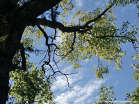
Native Trees of Nebraska
Once sparsely forests, the landscape of
Nebraksa offered little to the early pioneers of the
corn husker state. Even now, Nebraska has more
prairie and non-forested ecosystems than most
other states. Despite the lack of forests however,
there are some interesting and surprising facts
about Nebraska. It is the birth place of Arbor Day
(US) and places in the top ten of states with the
most Tree CityUSA's. Nebraska is also home to the
oldest Federally operated tree nursery in the United
States, as well as has the largest hand planted
forest in North America. Not bad for a state with so
little natural forest cover!
Within the forests of Nebraska are some giants. Up until it died in 2007, the US National
Champion Eastern Cottonwood stood in Seward County. It measured 85 feet tall and had a
trunk circumference of 36 feet. The only remaining National Champion within the state is a
Dwarf Chinkapin Oak. Nebraska records its tallest trees and has a list of state champions
(available here), most of which are in the south east corner of the state. Currently (2013), the
tallest tree in Nebraska is actually a non-native White Poplar, measuring 115 feet tall. The
tallest native species is a 100 foot Silver Maple. At 22.5 feet around, this particular tree also has
the widest recorded trunk circumference in all of Nebraska.
Recently, major forest threats have been wildfires and flooding. In the northeast, heavy
flooding has taken out large forested areas. Because of this, there has been an explosion in the
number of eastern redcedar trees. The number of these trees found has quadrupled in about
10 years, growing by about 38,000 acres a year. Wildfires in 2012 claimed large swaths of
pines in what is known as the pine ridge. Previous to the fire, the pine forests in Sioux, Dawes,


State Tree: Eastern Cottonwood
Forested acres: 1.57 million (2012)
Percent of total area forested: 3%
Number of National Forests: 2
Number of State Parks: 54
Number of Tree city USA communities: 106
Number of invasive tree species: 1 (see state list for noxious/invasive plants)
Insects of Concern: Mountain Pine Beetle, Emerald Ash Borer (Found 70 miles outside state border), Gypsy Moth
Pathogens of Concern: Pine Wilt, Diplodia Blight, Thousand Canker Disease, Dutch Elm Disease
Number or Rare, Threatened or Endangered Species: NA
Number of tree families in our collection: 21
Sources:
Arborday.org
US Forest Service
Nebraska Forest Service
Nebraska State Legislature- .PDF
United States Department Of Agriculture, Natural Resources Conservation Services: PLANTS Database
Additional state resources:
Nebraska State Parks
University of Nebraska-Lincoln Extension Service
Percent of total area forested: 3%
Number of National Forests: 2
Number of State Parks: 54
Number of Tree city USA communities: 106
Number of invasive tree species: 1 (see state list for noxious/invasive plants)
Insects of Concern: Mountain Pine Beetle, Emerald Ash Borer (Found 70 miles outside state border), Gypsy Moth
Pathogens of Concern: Pine Wilt, Diplodia Blight, Thousand Canker Disease, Dutch Elm Disease
Number or Rare, Threatened or Endangered Species: NA
Number of tree families in our collection: 21
Sources:
Arborday.org
US Forest Service
Nebraska Forest Service
Nebraska State Legislature- .PDF
United States Department Of Agriculture, Natural Resources Conservation Services: PLANTS Database
Additional state resources:
Nebraska State Parks
University of Nebraska-Lincoln Extension Service

Nebraska Native Tree Facts

Nebraska Native Tree Families and Genera
Useful information while browsing species:
• How to read a botanical name
• How to use our species boxes:
• How to read a botanical name
• How to use our species boxes:
Additional Resources:
North American Native Tree Families
North American A to Z List by Scientific Name
North American A to Z List by Common Name
North American Native Tree Families
North American A to Z List by Scientific Name
North American A to Z List by Common Name
click to enlarge.
-Color denotes a tree that is rare or endangered

Please note: This is not a complete list of all native tree families and species found in Nebraska. We are constantly working towards a more comprehensive list and will add families and their species as completed.
Follow the links to view species native to Nebraska. If the genus is not linked, species are listed on the family page.
Aceraceae, Maple
Annonaceae, Custard-aple
Betulaceae, Birch
Betula, Birch
Corylus, Hazelnut
Ostrya, Hophornbeam
Bignoniaceae, Trumpet Creeper
Caprifoliaceae, Honeysuckle
Cornaceae, Dogwood
Cupressaceae- Cypress
Juniperus, Juniper
Ebenaceae, Ebony
Diospyros, Persimmon
Aceraceae, Maple
Annonaceae, Custard-aple
Betulaceae, Birch
Betula, Birch
Corylus, Hazelnut
Ostrya, Hophornbeam
Bignoniaceae, Trumpet Creeper
Caprifoliaceae, Honeysuckle
Cornaceae, Dogwood
Cupressaceae- Cypress
Juniperus, Juniper
Ebenaceae, Ebony
Diospyros, Persimmon
Fabaceae, Pea
Gleditsia, Locust
Fagaceae, Beech
Quercus, Oak
Hippocastanaceae, Horse-chestnut
Juglandaceae, Walnut
Juglans, Walnut
Oleaceae, Olive
Fraxinus, Ash
Pinaceae, Pinus
Pinus, Pine
Gleditsia, Locust
Fagaceae, Beech
Quercus, Oak
Hippocastanaceae, Horse-chestnut
Juglandaceae, Walnut
Juglans, Walnut
Oleaceae, Olive
Fraxinus, Ash
Pinaceae, Pinus
Pinus, Pine
Platanaceae, Plane-tree
Platanus, Sycamore
Rubiaceae, Madder
Rutaceae,Rue
Salicaceae, Willow
Populus, Cottonwood
Salix, Willow
Tiliaceae, Lindon
Ulmaceae, Elm
Ulmus, Elm
Platanus, Sycamore
Rubiaceae, Madder
Rutaceae,Rue
Salicaceae, Willow
Populus, Cottonwood
Salix, Willow
Tiliaceae, Lindon
Ulmaceae, Elm
Ulmus, Elm

Nebraska Endangered or Threatened Tree Species
While there are a few plants species endangered or threatened in
Nebraska, there are no tree species of concern at this time. See
External Links for full listing.
Looking for a nursery near you?
Check out our nursery listing by county below!
Sorry, we do not currently have any tree nursery listings for this state. We do update these lists, so please check back.
Check out our nursery listing by county below!
Sorry, we do not currently have any tree nursery listings for this state. We do update these lists, so please check back.
Additional Resources:
North American Rare and Endangered Trees
External Links:
USDA PLANTS Database
Nebraska Endangered Species (Full List)
North American Rare and Endangered Trees
External Links:
USDA PLANTS Database
Nebraska Endangered Species (Full List)


Want to add your tree to our picture gallery? Click here for details!
Tree lists:
•A-Z by scientific
name
•A-Z by common
name
•By Family
For state A-Z list click state name below.
•A-Z by scientific
name
•A-Z by common
name
•By Family
For state A-Z list click state name below.
-Color denotes a tree that is rare or endangered

The state tree of Nebraska changed in 1979 from the American elm to the Eastern cottonwood, Populus deltoides. Nebraska was home to the 85 foot tall National Champion cottonwood until the summer of 2007 when it died and was later removed. Cottonwood trees were an important part of pioneer life in Nebraska. Among the sparse forests of early Nebraska, they were the giants of the land. The trees often signaled water sources on the frontier and settlers planted cuttings to claim their lands. In modern times, cottonwood trees make up the majority of processed lumber and can be found throughout Nebraska.
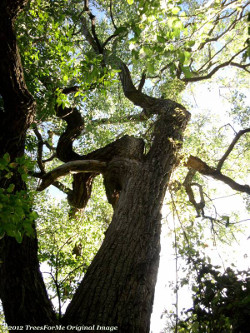
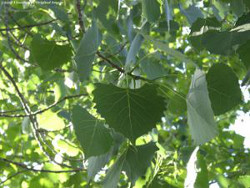
Cottonwood trees are fast growers and can live 80 to 100 years. Even with the fall of the previous National Champion, Populus deltoides is still commonly the tallest tree around as they can reach heights over 100 feet. Their distinct leaves are triangular with toothed margins (or edges), are darker green above, lighter and silvery below, and have yellow venation. Cottonwood trees are a member of the willow family and are deciduous.
The name 'cottonwood' comes from the white, fluffy, cotton-like fibers attached to the seeds, which enable them to disperse on the wind.
Learn more.
The name 'cottonwood' comes from the white, fluffy, cotton-like fibers attached to the seeds, which enable them to disperse on the wind.
Learn more.
